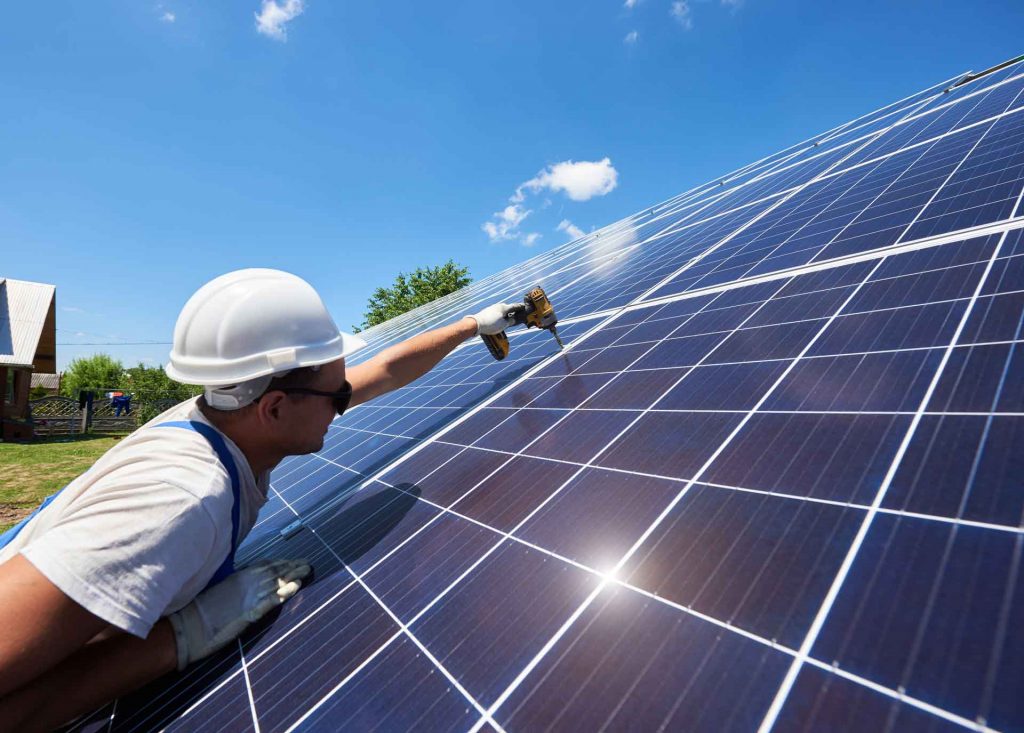The ocean has always been a force of nature untamed, relentless, and full of raw energy. But what if we could harness not just its power, but pair it with the sun’s boundless rays to create a seamless, 24/7 renewable energy system? Imagine floating solar islands that rise and fall with the tide, their surfaces drinking in sunlight while submerged turbines convert the rhythmic pulse of waves into electricity.
This isn’t just a futuristic dream. From the coast of Australia to the North Sea, engineers and scientists are already testing hybrid ocean energy systems that could one day power entire cities. The potential is staggering: an uninterrupted, self-sustaining energy network where the sun handles the day, and the waves take over at night.
Let’s dive into how this synergy could rewrite the future of clean power.
1. The Dance of Light and Motion: A Perfect Energy Pair
Solar power has a limitation it sleeps when the sun sets. Wave energy, on the other hand, never stops. The ocean’s currents, tides, and swells are constant, pulsing with kinetic energy day and night. By combining these two forces, we could create a balanced, around-the-clock renewable energy source.
Projects like Wave Solar in Portugal are already experimenting with floating solar panels anchored to wave energy converters. When the sun shines, the panels generate electricity. When clouds roll in or night falls, the motion of the waves takes over. The result? A continuous flow of power without the need for massive battery storage.
This isn’t just about efficiency it’s about resilience. Unlike wind or traditional solar farms, which can be disrupted by weather, ocean-based hybrid systems thrive in the very conditions that would hinder other renewables.
2. Floating Solar Farms That Ride the Waves
Most solar panels sit rigidly on rooftops or vast desert arrays. But the next generation of photovoltaics is designed to float not just on calm lakes, but on the open ocean. Companies like Ocean Sun are developing flexible, saltwater-resistant solar membranes that can withstand rough seas while generating electricity.
For cities still relying on land-based solar, companies like Solar panels Leicester are optimizing rooftop installations for maximum efficiency. But the real frontier is offshore, where solar and wave energy can coexist on floating platforms.
These hybrid platforms are more than just energy generators they’re ecosystems. Some designs incorporate aquaculture beneath the solar arrays, where mussels and seaweed grow, absorbing carbon and filtering the water. Energy production and environmental restoration, working hand in hand.
3. The Wave Converters: Turning Ocean Motion into Electricity
While solar panels capture sunlight, wave energy converters (WECs) transform the ocean’s movement into power. There are several types:
-
Point absorbers – Buoy-like devices that bob with the waves, driving hydraulic pumps.
-
Oscillating water columns – Chambers where waves compress air, spinning turbines.
-
Surface-following attenuators – Long, hinged structures that flex with the waves, generating electricity.
When paired with floating solar, these systems create a feedback loop. Solar panels stabilize the platforms by day, while wave action ensures energy production never drops to zero. The Australian CETO system, for example, uses submerged buoys to pump high-pressure water ashore, where it drives turbines completely independent of sunlight.
4. The Battery Beneath: Using the Ocean as Energy Storage
One of the biggest challenges in renewable energy is storage. But the ocean itself could be the solution. Excess solar energy can be used to produce hydrogen via electrolysis, storing it in underwater tanks. When the sun isn’t shining, this hydrogen can be converted back into electricity.
Another approach is pumped hydro storage using solar power to pump seawater into elevated reservoirs, then releasing it through turbines when energy demand peaks. The ocean isn’t just a power source; it’s a giant, natural battery.
5. The Global Test Cases: Where It’s Already Happening
Several pioneering projects are proving this concept works:
-
Hawaii’s NELHA – A testbed for wave and solar hybrids, supplying power to the Big Island.
-
The North Sea Wind Power Hub – A proposed artificial island combining offshore wind, floating solar, and wave energy to power Northern Europe.
-
China’s Ocean Sun Project – A floating solar farm integrated with tidal energy in the Yellow Sea.
These experiments show that hybrid ocean energy isn’t just theoretical it’s scalable.
For a deeper look at the policy and investment needed to expand this technology, this International Renewable Energy Agency report outlines the roadmap for ocean energy adoption.
6. The Challenges: Corrosion, Cost, and the Open Sea
Of course, the ocean is a harsh environment. Saltwater corrodes metal, storms batter equipment, and maintenance is difficult in deep water. Early wave energy projects have struggled with durability, and floating solar is still more expensive than land-based systems.
But the tides are turning. New materials like graphene-coated solar cells and self-healing concrete for wave converters—are making ocean energy infrastructure more resilient. And as fossil fuel costs rise, the economics of hybrid ocean systems are becoming irresistible.
Conclusion: A New Era of Energy Harmony
The future of renewable energy isn’t just on land it’s on the water. By combining the sun’s brilliance with the ocean’s endless motion, we could create a power grid that never sleeps, never falters, and never pollutes.
This isn’t just about technology. It’s about reimagining our relationship with nature not as something to dominate, but as a partner in sustaining life on Earth. The waves and sunlight have powered the planet for billions of years. Now, they’re ready to power our civilization.
The blue horizon isn’t just a view. It’s the future.

Comments on “The Blue Horizon: How Waves and Sunlight Could Power Our Planet”